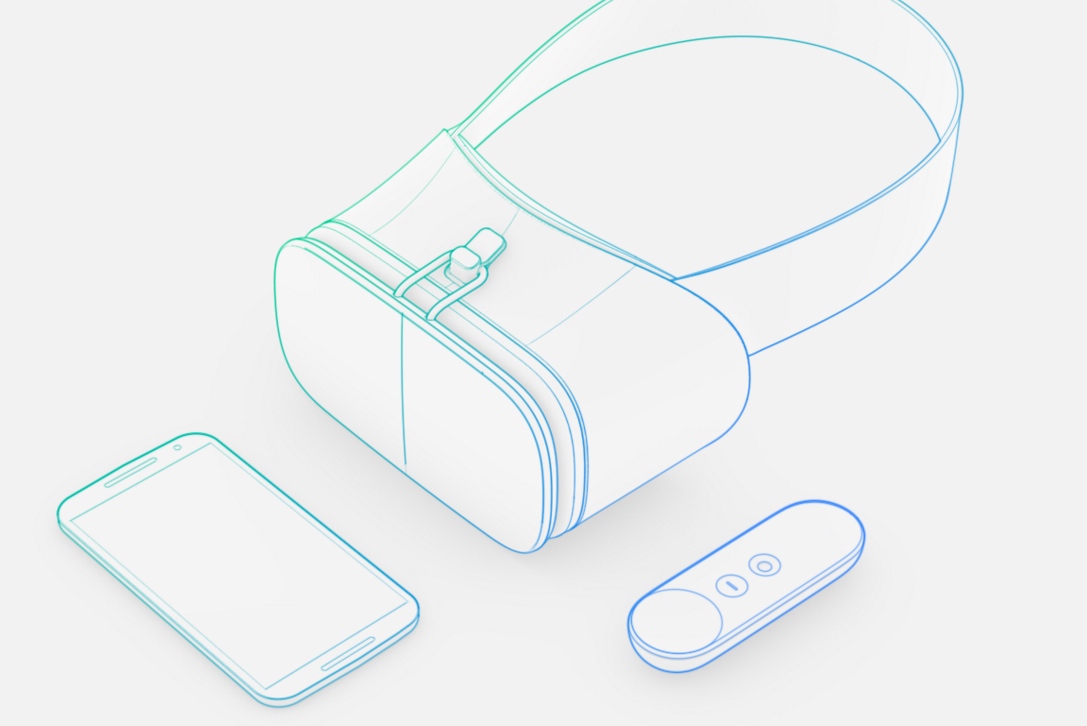At Google’s annual I/O developer conference this week, the company announced their new Daydream VR solution.
Google has released relatively few details, but here’s what we do know: Daydream is a simple headset that uses your smartphone as a computer and display. It won’t take just any smartphone, though, and Google has made plans to certify what they call “Daydream-ready” phones that are up to the task of running VR within the device. Criteria for receiving this certification include resolution and head-tracking ability.
It differs from the Samsung Gear VR, another headset built to exploit the computing power of smartphones, in that it comes with its own remote.
Recode calls it “Cardboard 2.0,” referring to Google’s first VR endeavor, a cardboard headset built to turn any smartphone into a VR solution.
The Verge says Google’s decision to rely on smartphones instead of powerful desktop computers is a “bottom-up” strategy that bets on “the mobile devices in your pocket” getting “better faster than prices for high-end headsets.” The company predicts that this move will put them in position to bring VR to “hundreds of millions of people.”
This means Google is betting against solutions like the Oculus Rift, which requires a more powerful computer than you already have. Wired ran the prices on a computer that fit Oculus’ specs, and found that it would cost *at least* $1000, if not $1500. That’s on top of the $600 you’ll be throwing down for the device itself.
http://www.wired.com/2015/05/heres-pc-needs-run-oculus-rift/
On the other hand, many of the phones being released in the next year will be Daydream-ready. Since you were already going to buy a new phone, this will save you the trouble of an additional outlay for a powerful desktop computer. Just supplement your phone with a relatively inexpensive Daydream headset, and you’re hanging out in virtual reality.
Wired: “And make no mistake: mobile VR is, at least for now, the way most people will experience the technology.”
Google’s other play with Daydream involves making every single app in their Android operating system VR-compatible. As Wired explains,
“Daydream isn’t a custom version of the operating system like Android TV or Android Wear. It’s just part of Android, the way texting and notifications are part of Android. It’s VR Mode. When you dock your phone, you’ll launch Daydream Home, which will let you open apps from Netflix, Hulu, and IMAX, or games from EA, Ubisoft, and more. It’s clean and comfortable, a lot like Oculus Home. All Bavor would say was “there are some really neat things in the works,” but given how much is already in Cardboard, the Daydream ecosystem is going to be big from day one.”
http://www.wired.com/2016/05/android-vr-daydream-googles-plan/
What that means, in other words, is that Google just fired a warning shot—they have big plans for VR and they’re coming soon. It may even be enough to make me ditch my iPhone.








